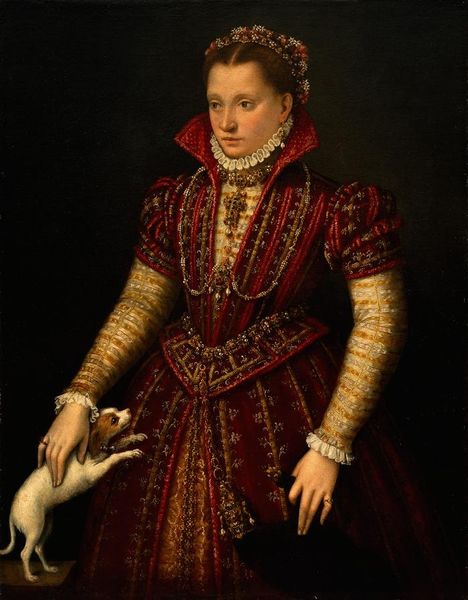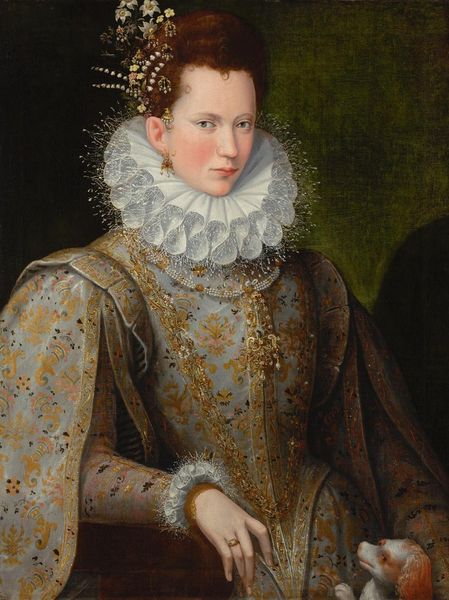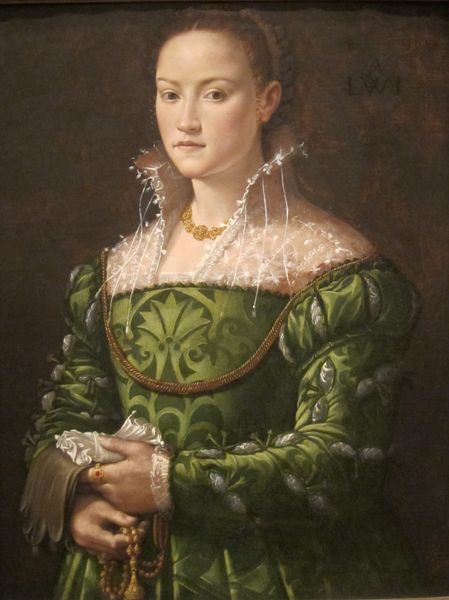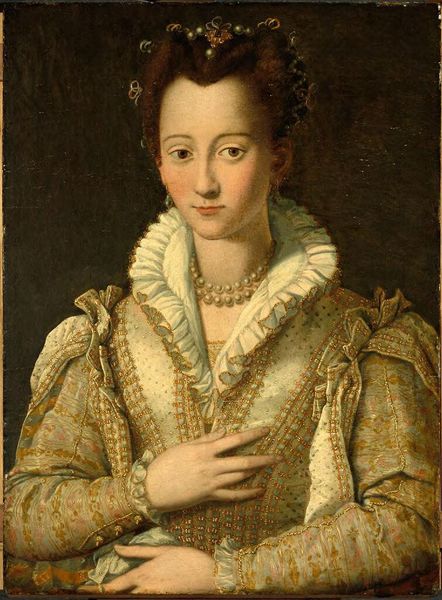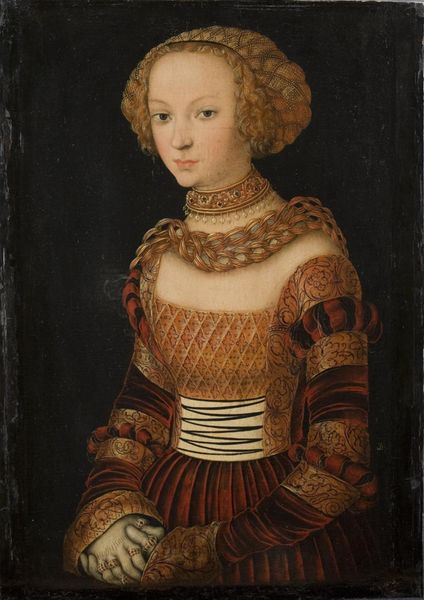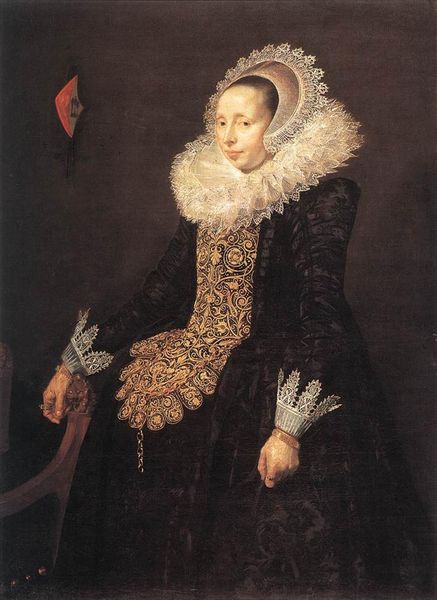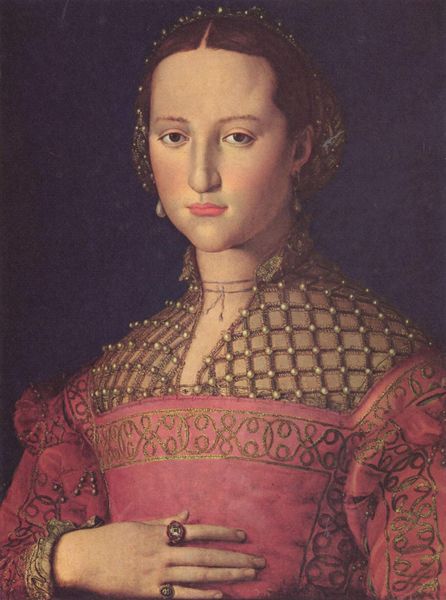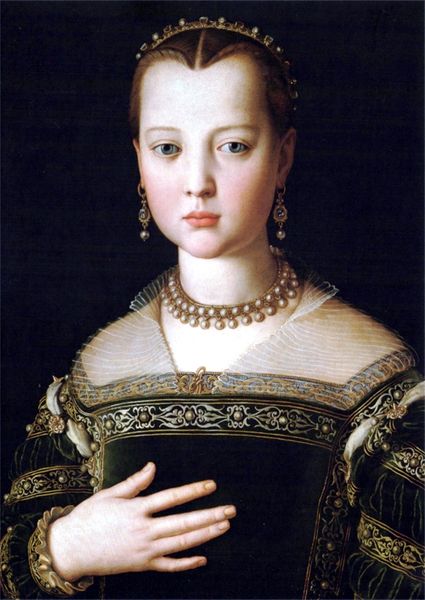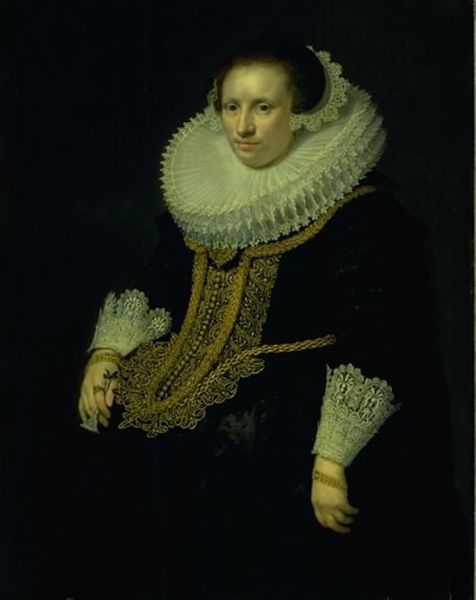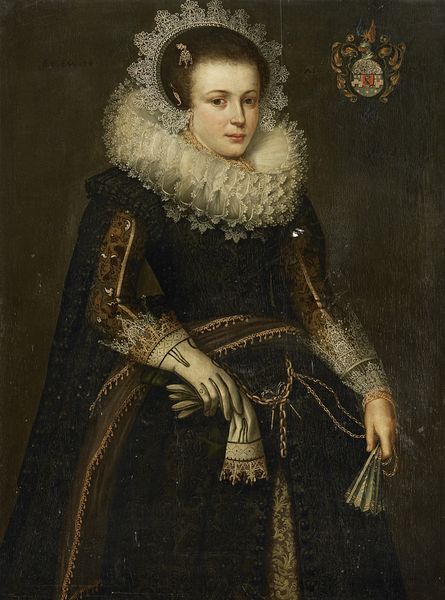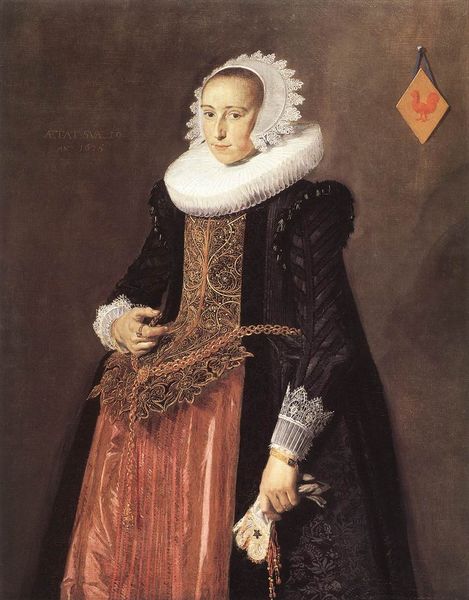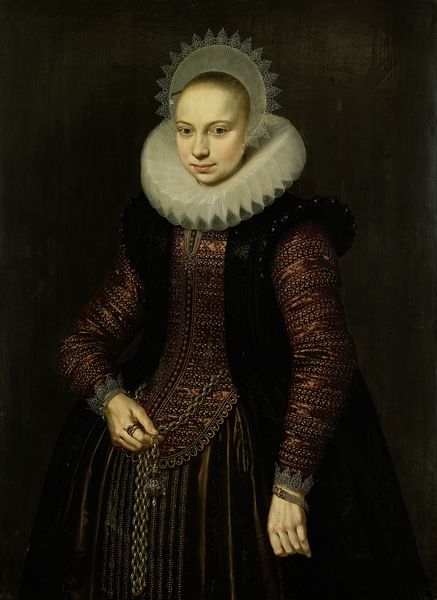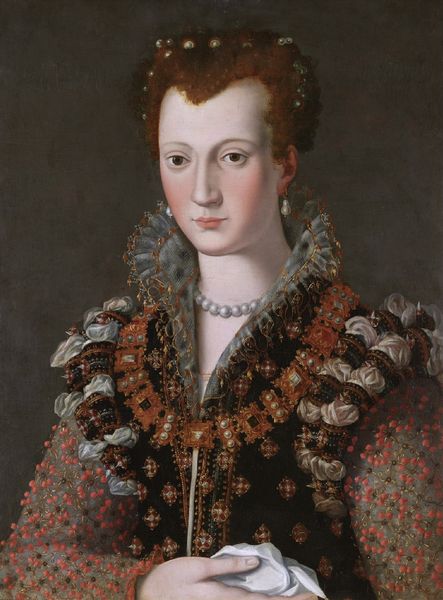
Portrait of Bianca Ponzoni Anguissola, the artist's mother 1557
0:00
0:00
#
gouache
#
fantasy art
#
green emphasis
#
green tone
#
possibly oil pastel
#
green background
#
underpainting
#
muted green
#
green
#
lady
#
green and neutral
Copyright: Public domain
Curator: Let’s take a moment to consider Sofonisba Anguissola's "Portrait of Bianca Ponzoni Anguissola, the artist's mother," painted around 1557. It's a beautiful depiction, housed here in the Gemäldegalerie in Berlin. Editor: My initial reaction is one of serene elegance, although there's a formality, a slight remove. It's the colours, maybe, the muted gold of the dress against that shadowed, almost secretive green backdrop. Curator: Absolutely, the colours tell a story. Gold, of course, a consistent symbol of status and wealth, yet here rendered in subtle tones. The green offers not merely contrast but perhaps speaks to renewal, domesticity, the nurturing role of motherhood itself. Do you see how the light falls softly on her face, drawing your eye to her placid and balanced expression? Editor: That downward gaze invites speculation about the subject's lived experience. Is this the representation of an archetype—a noblewoman—or a deliberate attempt by Anguissola to grant her mother a form of historical agency? Is there, even, a feminist reading of the painting here? After all, we rarely hear of women depicted in roles outside motherhood, during the Renaissance. Curator: Fascinating. Indeed, her choice of attire also reflects the cultural memory. That dress is far more than mere embellishment; it symbolizes societal rank, belonging, family heritage, it even shows how Renaissance styles carried particular symbolic significance, acting almost as visual code for lineage and status. Editor: Right. Considering Anguissola's position as a pioneering female artist in a heavily male-dominated era, is it possible that the jewel and fine dress carry a coded suggestion that artistic labor might yield the same dividends that noblewomen are assumed to receive by birthright alone? The chain linked to what may be a marten suggests a kind of captivity and domestic submission as well. Curator: And there, we can see how Anguissola takes the visual cues of her period and then imprints them with new potential— a celebration of status infused with affection. These layered interpretations speak to the painting's sustained resonance through art history. Editor: I find myself still questioning that sense of reserved melancholy that emerges from the picture; nonetheless, seeing the dialogue between personal sentiment, cultural display, and the artist's position, has helped nuance the painting's aura with something unexpected. Curator: Agreed. "Portrait of Bianca Ponzoni Anguissola" provides insight into the enduring power of symbols within familial contexts.
Comments
No comments
Be the first to comment and join the conversation on the ultimate creative platform.
